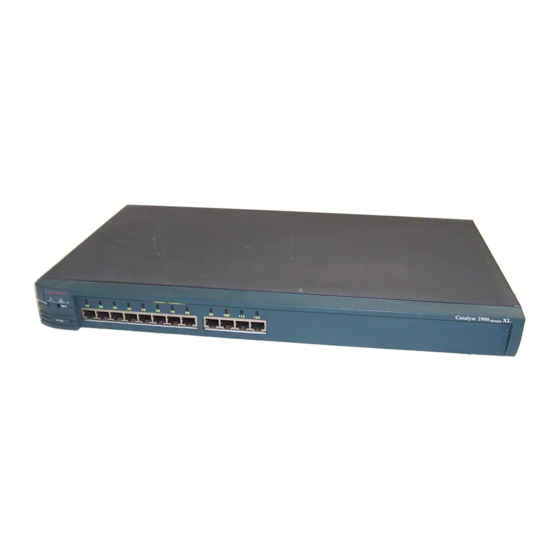
User Manuals: Cisco RJ-45-to-AUX Cable Adapter
Manuals and User Guides for Cisco RJ-45-to-AUX Cable Adapter. We have 1 Cisco RJ-45-to-AUX Cable Adapter manual available for free PDF download: Brochure
Cisco RJ-45-to-AUX Brochure (411 pages)
Cisco Switch Brochure
Table of Contents
-
Introduction
20 -
-
In Depth22
-
-
-
In Depth46
-
-
Access Layer48
-
Core Layer49
-
-
Switch Ioss54
-
-
-
-
-
In Depth70
-
-
The CLI77
-
WAN Manager77
-
-
-
Logging out79
-
-
-
-
In Depth84
-
-
-
Enabling CEF97
-
-
-
-
In Depth104
-
Why Use Vlans105
-
VLAN Trunking110
-
Trunk Types110
-
-
-
-
In Depth130
-
-
-
In Depth153
-
-
Igmpv1161
-
Igmpv2162
-
Time to Live163
-
-
Configuring CGMP170
-
Configuring GMRP172
-
-
-
In Depth176
-
ATM Overview176
-
Lane177
-
ATM Protocols178
-
ATM Cells178
-
ATM Addressing183
-
-
-
-
In Depth199
-
Lightstream 100199
-
Lightstream 1010200
-
Lightstream 2020201
-
-
-
In Depth215
-
Frames215
-
Etherchannel225
-
-
Portfast227
-
Uplinkfast227
-
Backbonefast228
-
-
-
-
In Depth243
-
How MLS Works243
-
MLS Components244
-
MLS Flows246
-
-
Configuring MLS249
-
MLS Cache250
-
Aging Timers250
-
Vlan ID251
-
VTP Domain251
-
-
-
-
-
Viewing Mls−Rps256
-
-
-
In Depth259
-
Routing Problems259
-
The Solution261
-
The HSRP States263
-
-
-
In Depth270
-
-
-
In Depth288
-
-
The Switch Image290
-
-
-
-
In Depth299
-
-
[S] System Menu301
-
[M] Monitor309
-
[V] Virtual LAN309
-
[F] Firmware310
-
-
-
In Depth325
-
-
No Power325
-
Post325
-
Indicator Lights326
-
-
Switch Cabling327
-
Cable Problems328
-
-
-
-
Books357
-
Online Resources358
-
Cisco IOS358
-
IP Multicast358
-
Tacacs359
-
Vlans359
-
-
-
Overview361
-
-
-
Overview363
-
Contracting366
-
The Way to Fail366
-
Conclusion368
-
-
-
-
BPX 8600 Series386
-
MGX 8800 Series387
-
E−F396
-
G−I398
-
K−L401
-
M−N402
-
O−P404
-
Q−R406
-
U−X411
Advertisement
